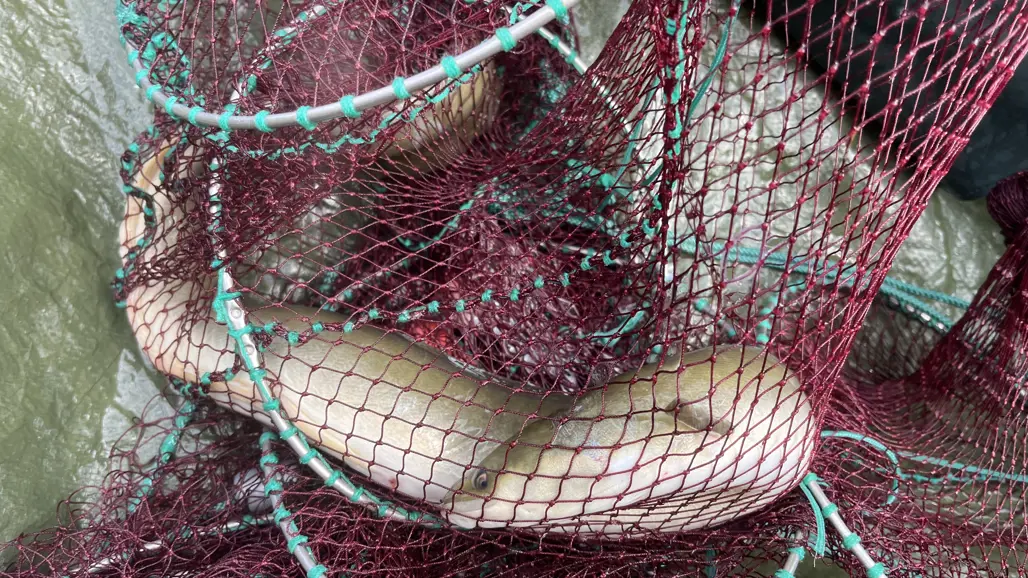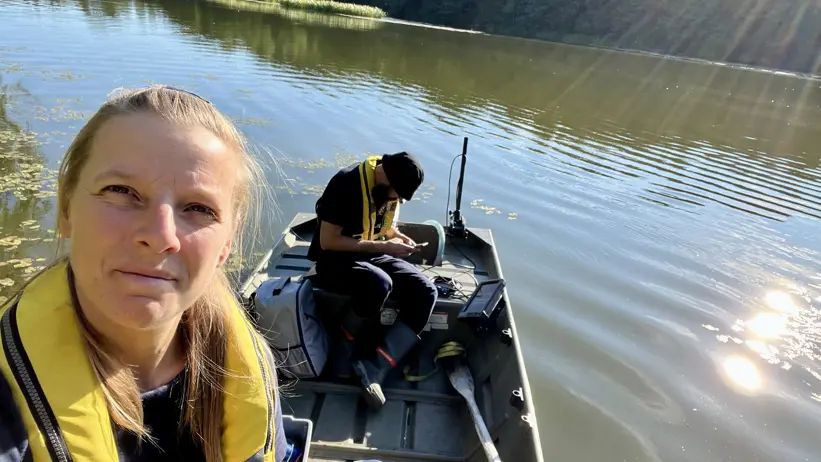
SLU’s first eel survey in the Nyköpingsån aims to provide knowledge about the eel’s future
Hydropower plants and dams pose major obstacles for the critically endangered European eel. Now researchers from the Swedish University of Agricultural Sciences (SLU) want to find out how eels in the Nyköpingsån are affected if the water is allowed to flow more freely.
The eel has long fascinated both researchers and fishers. Although much is known about its life cycle, parts of its journey between the spawning grounds in the Sargasso Sea and the rearing habitats in Swedish lakes remain a mystery. What is clear, however, is that the population is under severe pressure.
– Today, only between 0.5 and 8 percent of the original stock remains in Europe, says Josefin Sundin, a researcher at SLU’s Department of Aquatic Resources, who recently took part in a week-long eel survey in the Nyköpingsån.
During the survey, the researchers caught 28 eels, which were then measured, weighed, tagged, and released back into the river.
– Exactly how many eels currently live in the Nyköpingsån is difficult to know. We do know that eels migrate up the river, since juvenile eels are caught annually in a special trap at the first hydropower station, but no systematic eel survey has ever been carried out here before. That makes our work in the Nyköpingsån an important starting point, Josefin continues.

But the route to and from the sea is far from easy for the eels. Hydropower plants and dams block their migration, and although a special trap in central Nyköping helps some eels upstream, it is unclear how many manage to pass the barriers on their own – and how many die trying. For eels that later want to migrate back to the sea, there is currently no assistance at all.
– The municipality of Nyköping has the goal of making the waterways more free from migration barriers, something that would benefit the eels. But we don’t yet know exactly what effect that would have, says Josefin.
Through repeated surveys, the researchers hope to track developments and see whether the number of eels increases when the water is allowed to flow more freely.
– The Nyköpingsån could serve as an index river for future eel monitoring, if it becomes possible for eels and other fish to once again migrate freely up and down the system, says Josefin.
How an eel survey is carried out
Eel surveys are conducted with fyke nets (a type of fishing gear similar to a crayfish trap). The nets used are so-called paired fyke nets, meaning they are connected two by two, with guiding wings between each pair leading fish into the next trap. In the Nyköpingsån, the nets were deployed from a boat and placed in the water with a weight at each end. The fyke net extended from the shore and out into the river. The nets were emptied once per day. All captured eels were brought ashore for sedation, sampling, and tagging with a PIT tag, after which they were released back into the river.
Contact
-
PersonJosefin Sundin, Researcher and Deputy Head of DivisionInstitute of Freshwater Research